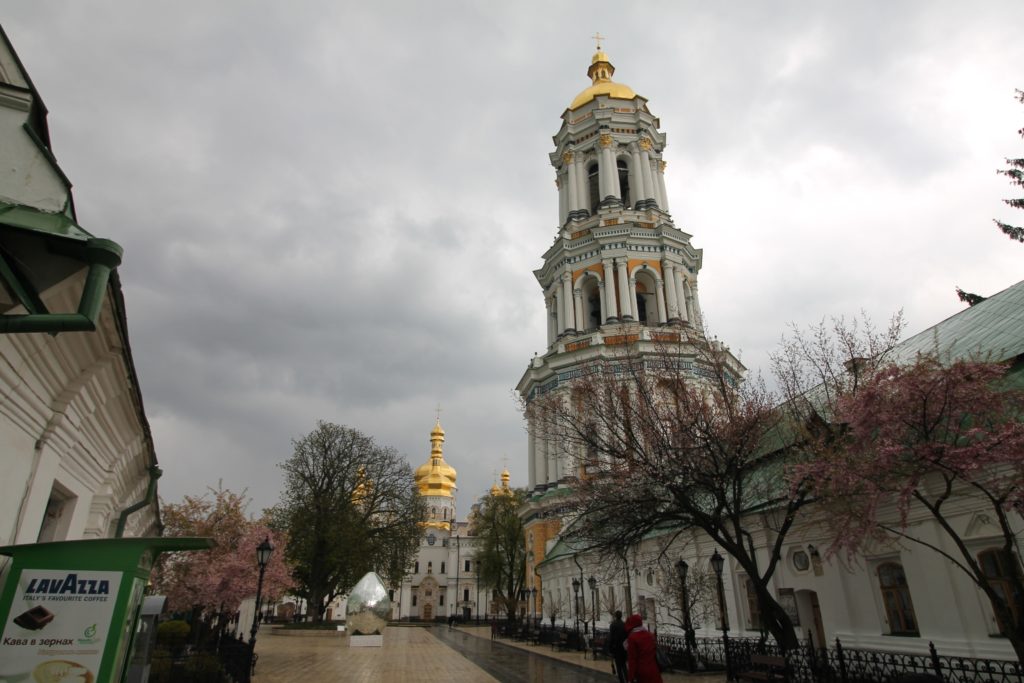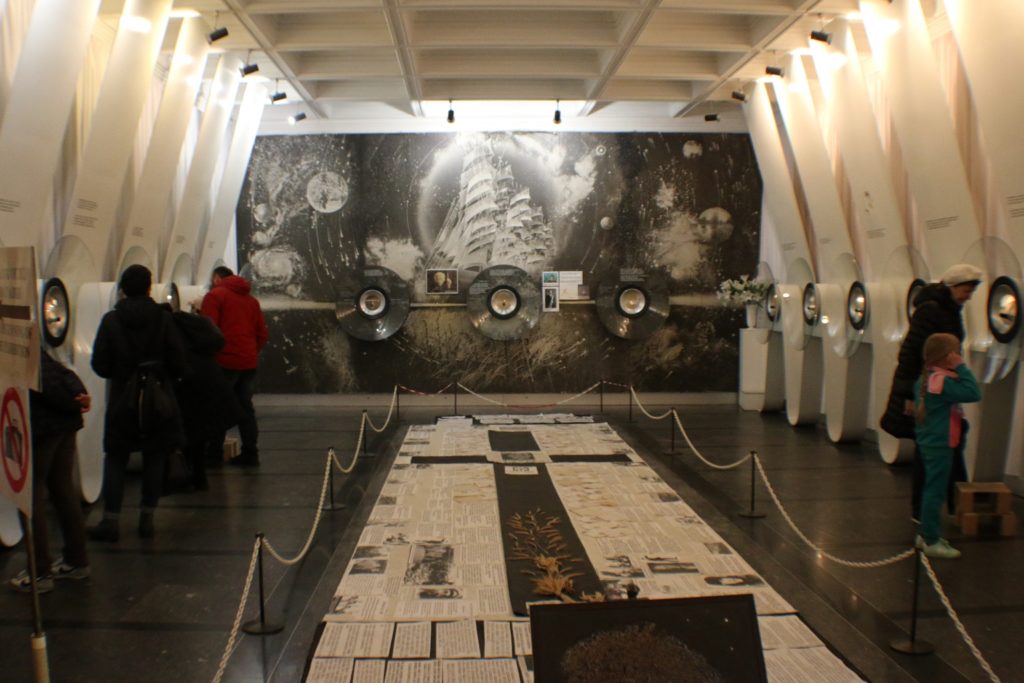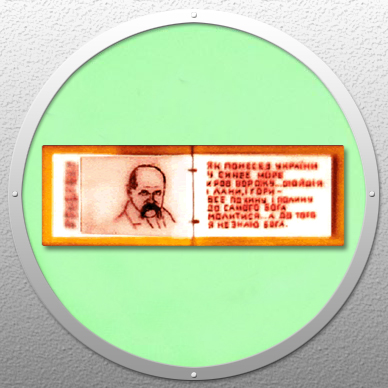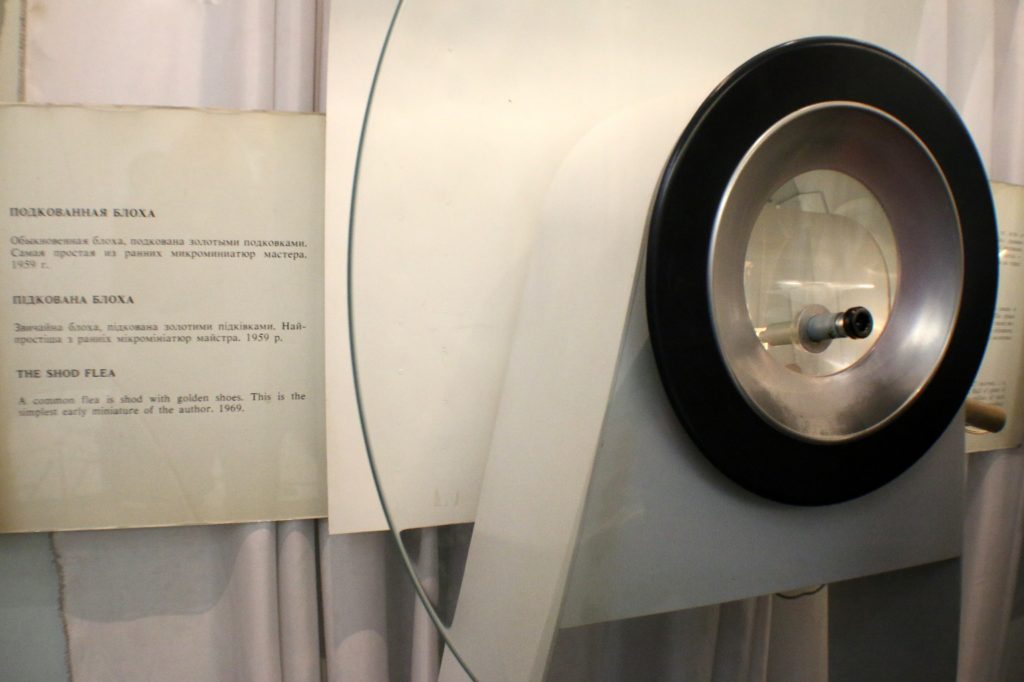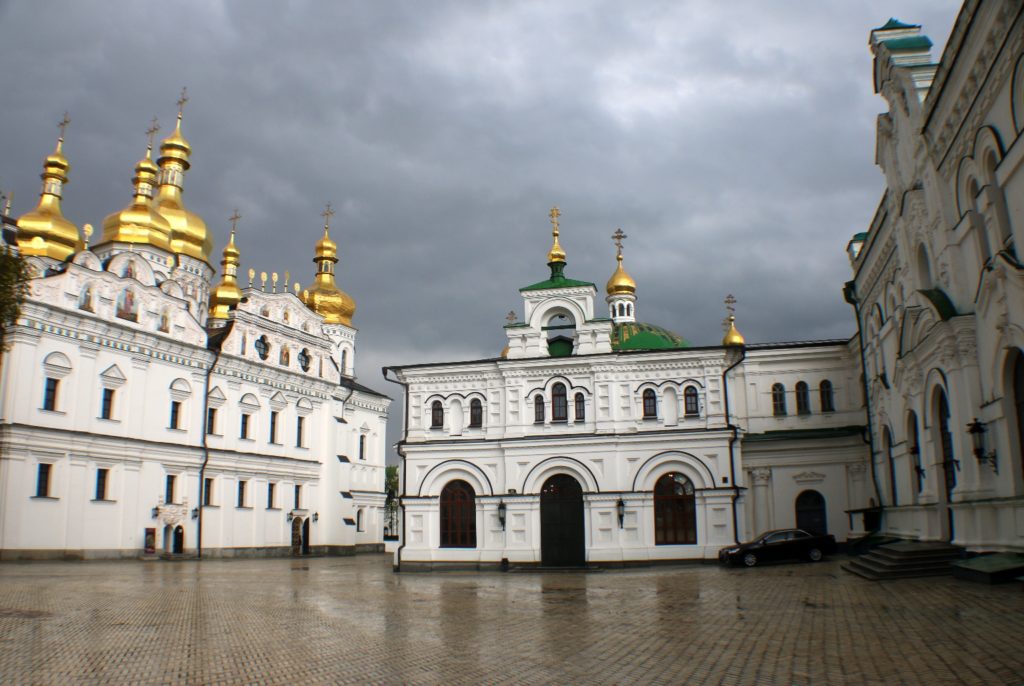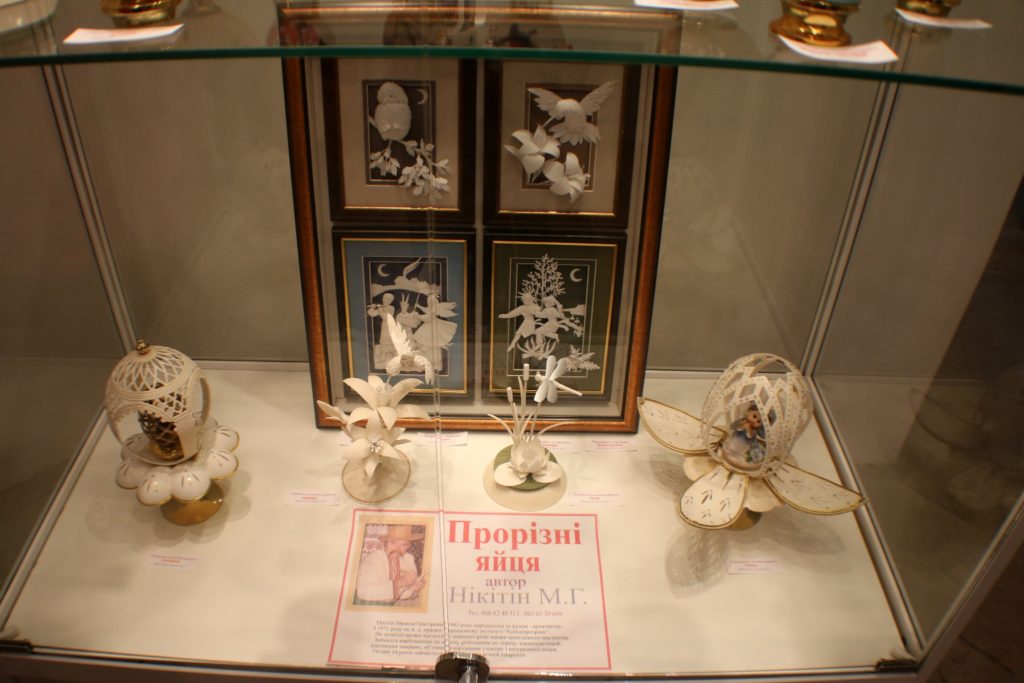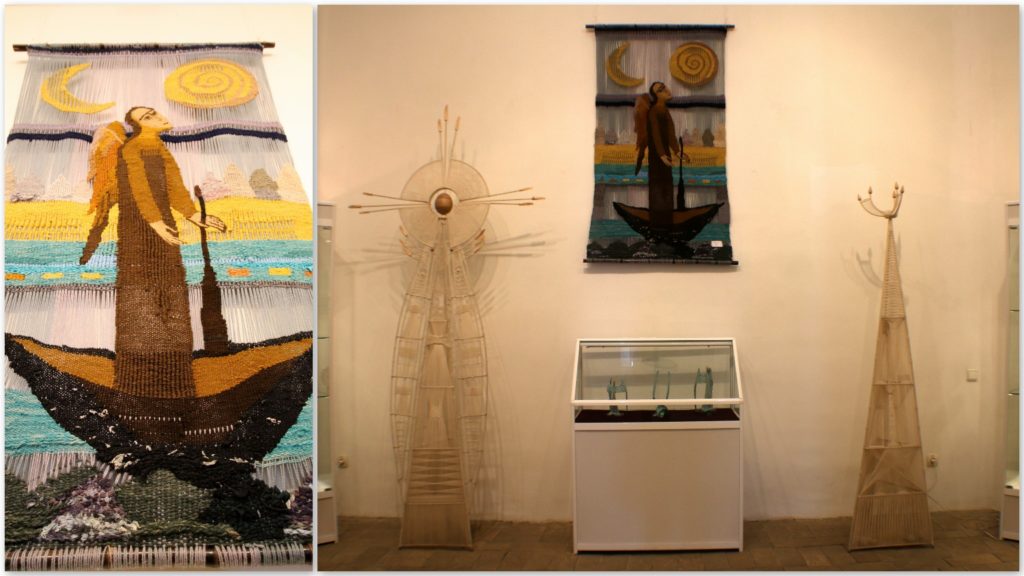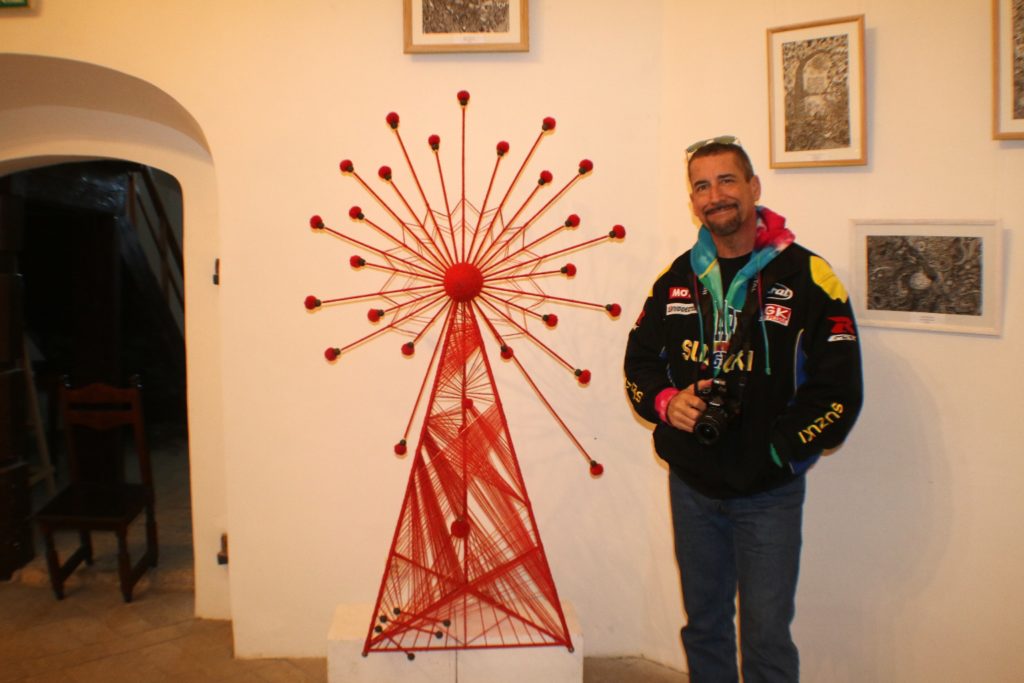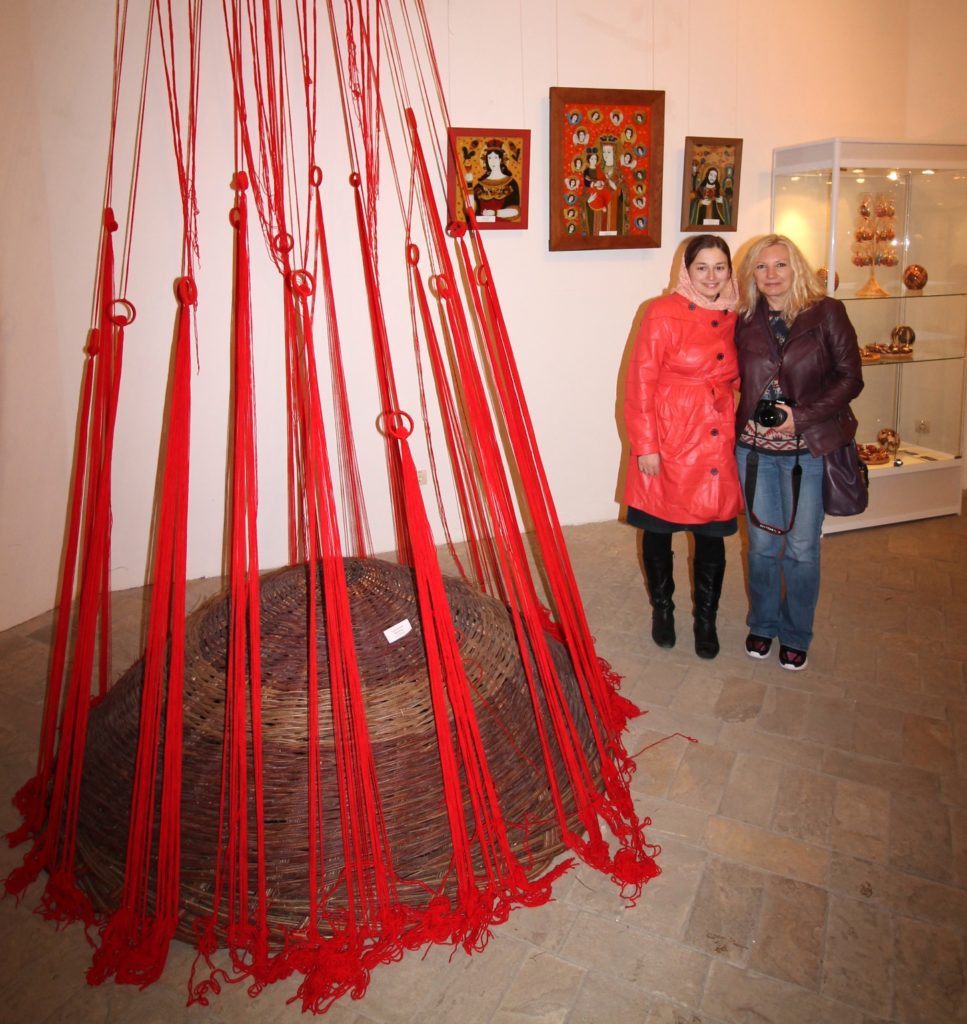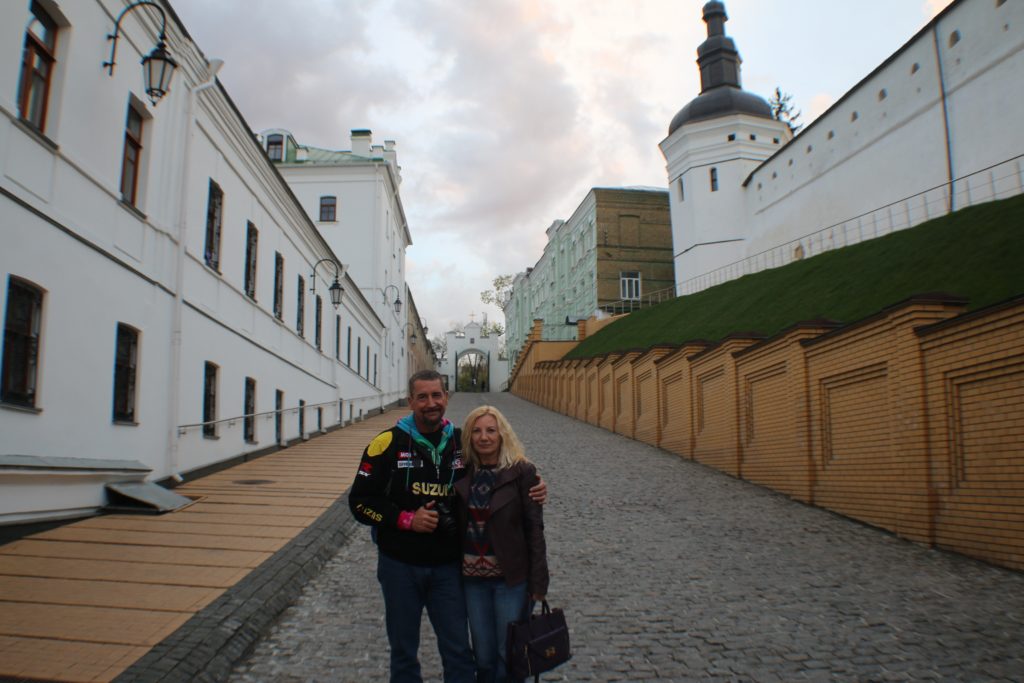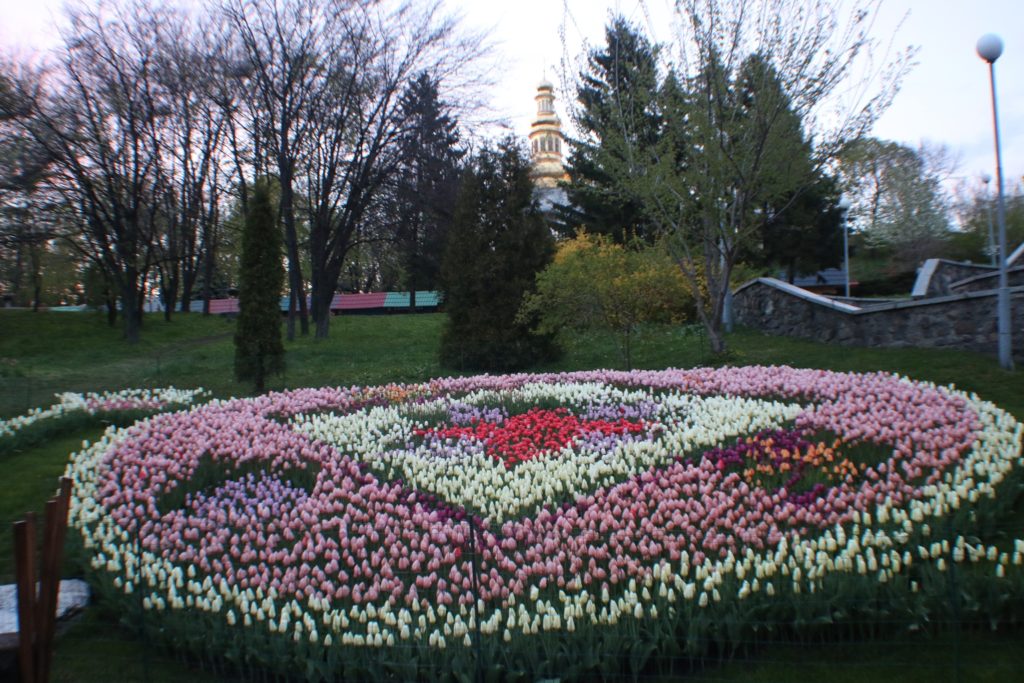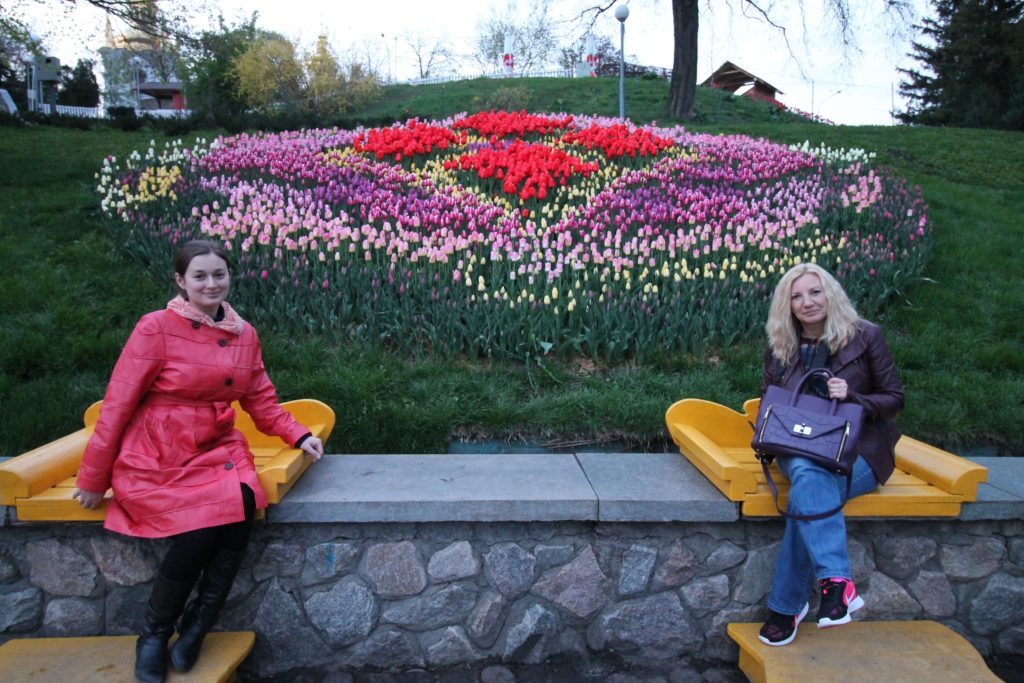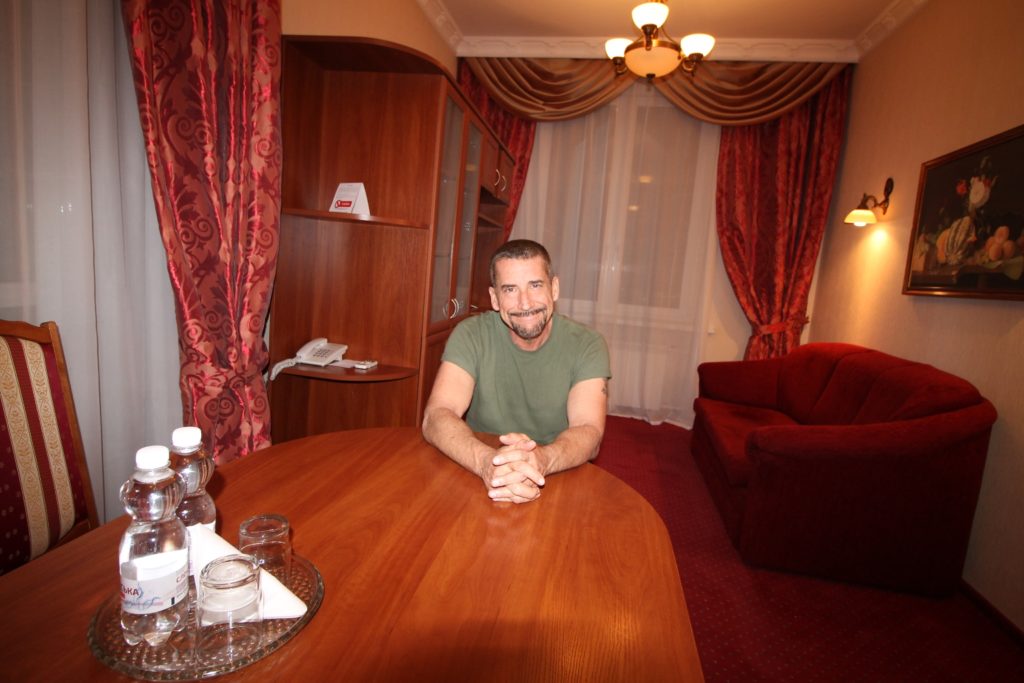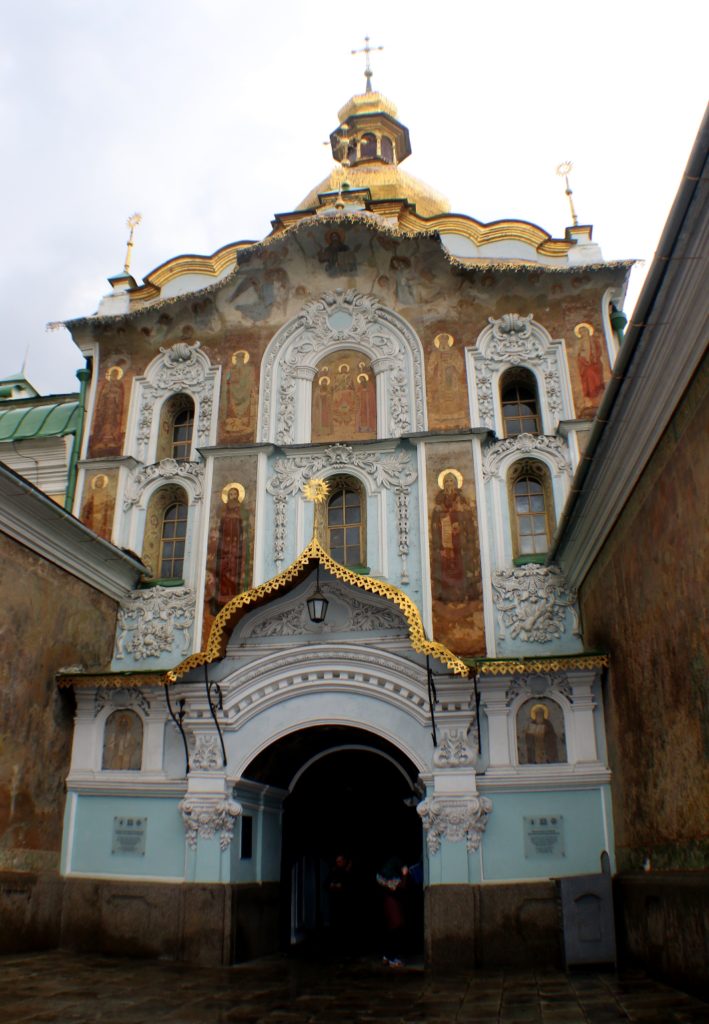
We started our Kiev sightseeing from Kiev Pechersk Lavra also known as the Kiev Monastery of the Caves, which is a historic Orthodox Christian monastery, built on top of a massive series of tunnels. It is also a UNESCO World Heritage Site, and one of the largest museums in Kiev with many sub-museums held within it. Pechersk Lavra is the first and the most ancient monastery on the territory of contemporary Ukraine. The monastery was founded in the mid-11th century by the venerable Anthony and Theodosius of the Caves (of “Pechersk”). Here we are entering Pechersk Lavra in the picture above.
The territory of the Kiev-Caves monastery is located in the very heart of Kiev, the Ukrainian capital, which since the 11th century according to the “Primary Chronicle” (the work of venerable Nestor the Chronicler of the Kiev Caves) has been known as “the mother of all the cities of Rus”.
The Lavra complex has over a hundred buildings, including numerous churches. On Sundays, up to ten Divine Liturgies are celebrated. While on weekdays, divine services are permanently celebrated throughout the many churches. Six ancient underground churches are located in the Far and Near Caves of the Monastery.
A very short video of our walk at the entrance of Kiev Pechersk Lavra.
It started raining hard, so we went to the Museum of Microminiatures first. The museum showcases one of the largest collection of works by the master of microminiatures, Mykola Syadristy, who has been crafting micro-miniatures for nearly forty years. The miniatures range in size from a few millimeters to mere fractions of a millimeter.
Among his amazing creations is what is believed to be the world’s smallest book with 12 pages of poetry by Taras Shevchenko at an astonishing 0.6 square millimeters, each page filled with the writing and illustrations of Syadristy himself. Here, Dave is looking through a microscope at this unique creation.
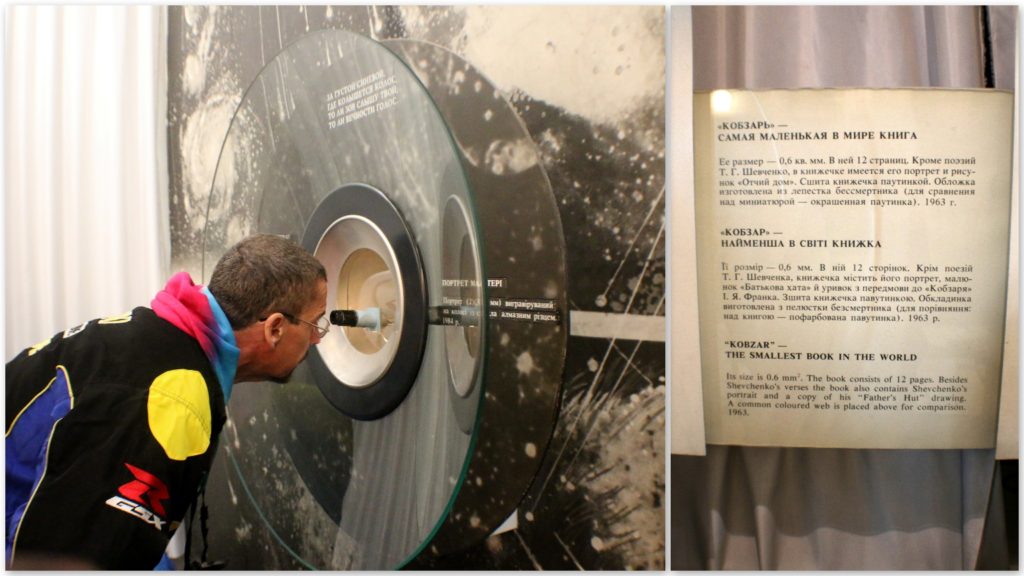
Here is an enlarged image of the tiny book.
Among the other items to be seen (all of which must be viewed through a microscope) are a golden chess set on a pin head, the picture of Russian composer V.V. Andreev etched onto glass and fitted into one half of a poppy seed, and a rose inside a hair follicle. Along the hair, a cavity was drilled and polished to transparency. Then, a rose stem, 0,05 mm width, was fixed inside. It was not very difficult for the artist to place a whole caravan of gold camels on needle’s eye. All these incredible items are much better to be viewed in person.
I want to show just one more picture of the interesting artwork. Here, we approached a microscope with a shod flea. The title is written in 3 different languages: Russian, Ukrainian and English.
This is The Shod flea, a life size flea is made of gold and shod with golden shoes. The size is enlarged. The tarsuses of a real flea are also shod with golden shoes (one of the master’s “simple” works).
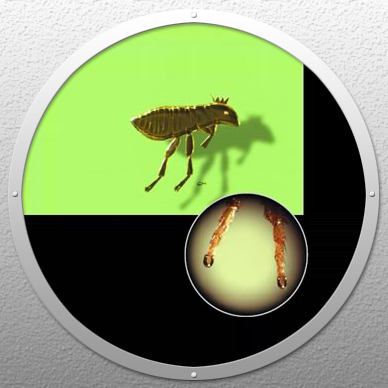
Source: museum-portal.com
We exited the museum and decided to explore the Great Lavra Bell Tower, since it was still raining too much to walk the grounds. These beautiful buildings were viewed from the Miniature Museum entrance.
Up-close view of the Great Lavra Bell Tower with its four tiers.
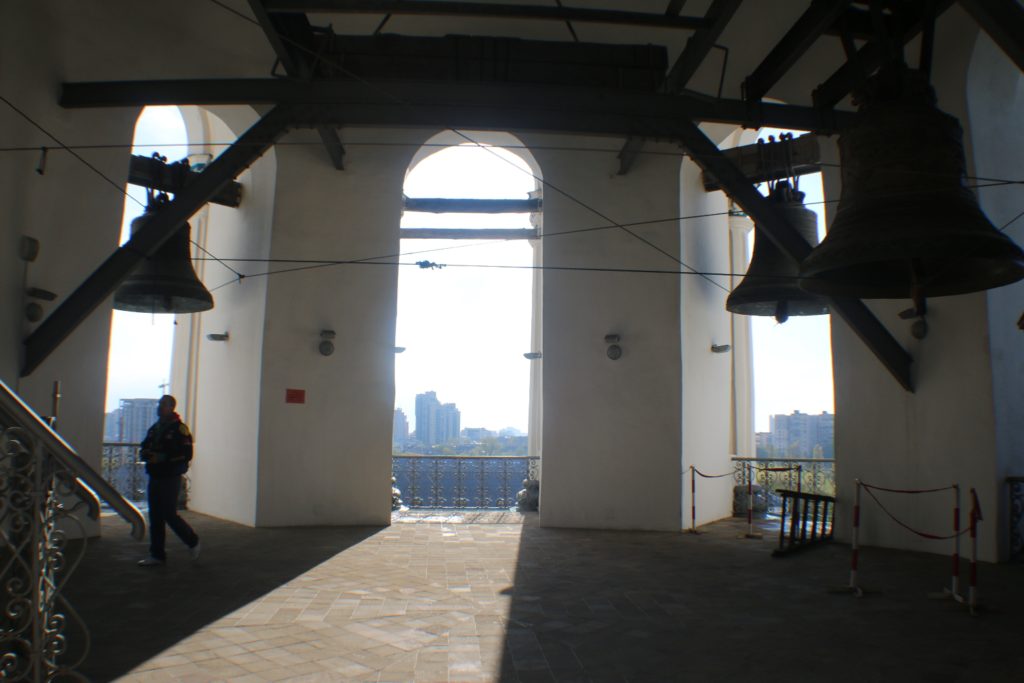
The views from the tower are breathtaking. The rain stopped and the sun came out making everything around look even prettier.
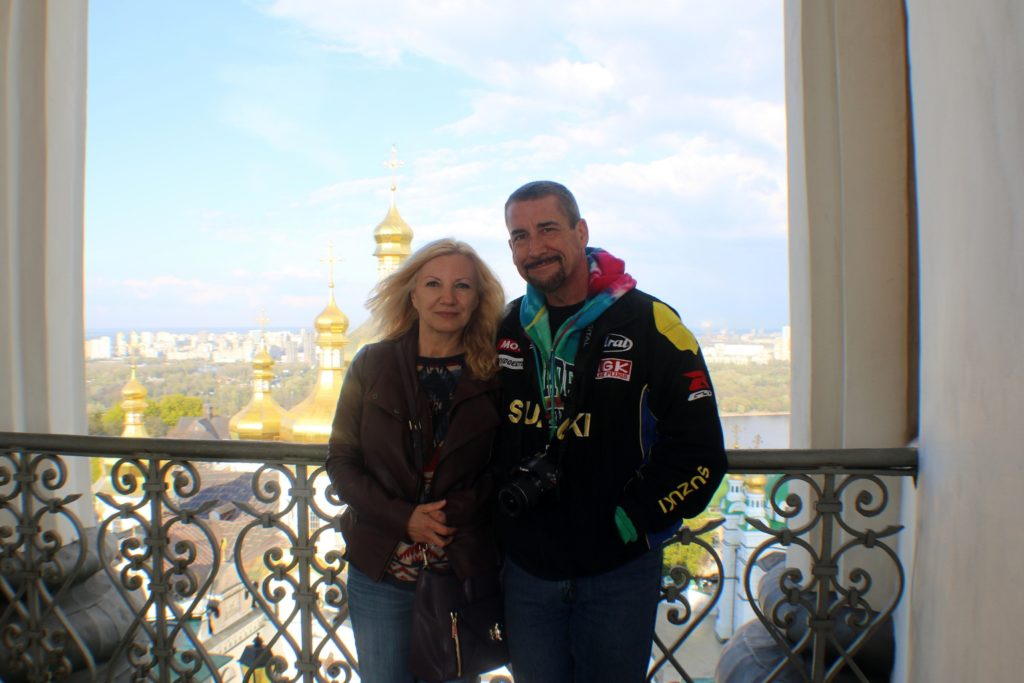
Tourists and Orthodox pilgrims alike flock to the Lavra. Set on 28 hectares of grassy hills above the Dnipro River, the monastery’s cluster of gold-domed churches is a feast for the eyes. The hoard of Scythian gold rivals that of the Hermitage in St Petersburg, and the underground labyrinths lined with mummified monks are exotic and intriguing. That’s from a tourist’s perspective, but for pilgrims this is simply the holiest ground in three East Slavic countries – Ukraine, Russia and Belarus.
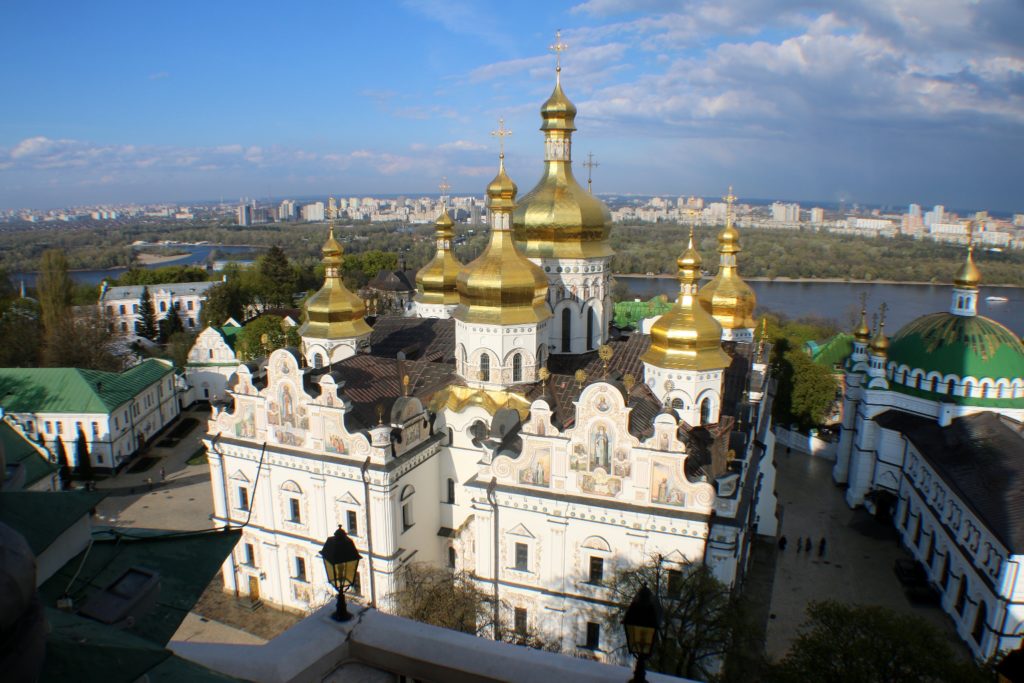
Panorama of the monastery (southward view).
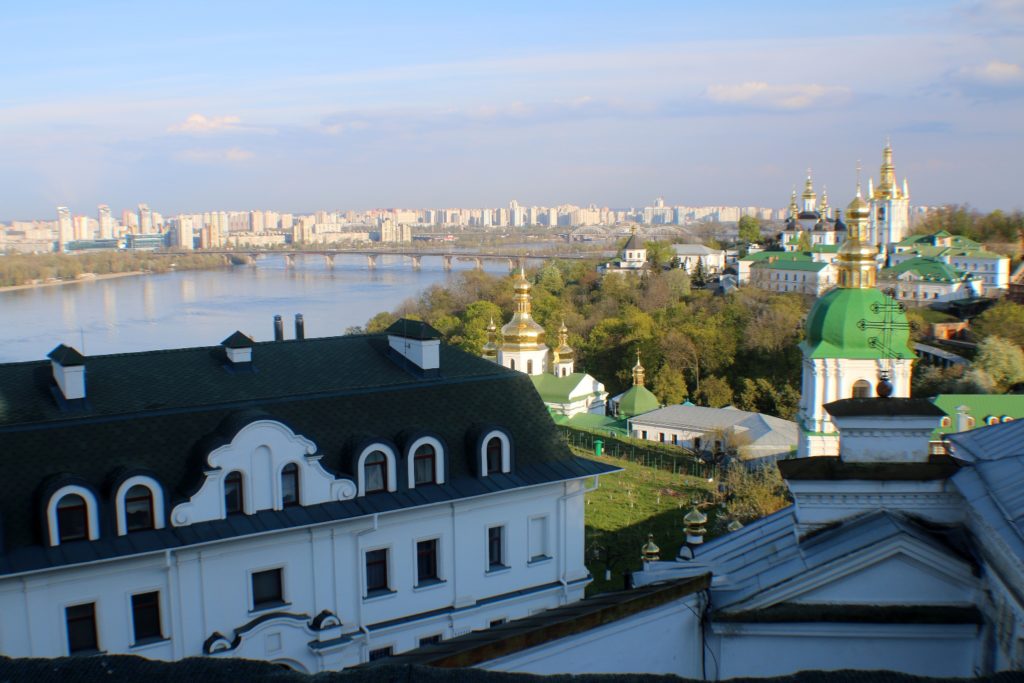
The grounds with numerous buildings of Pechersk Lavra.
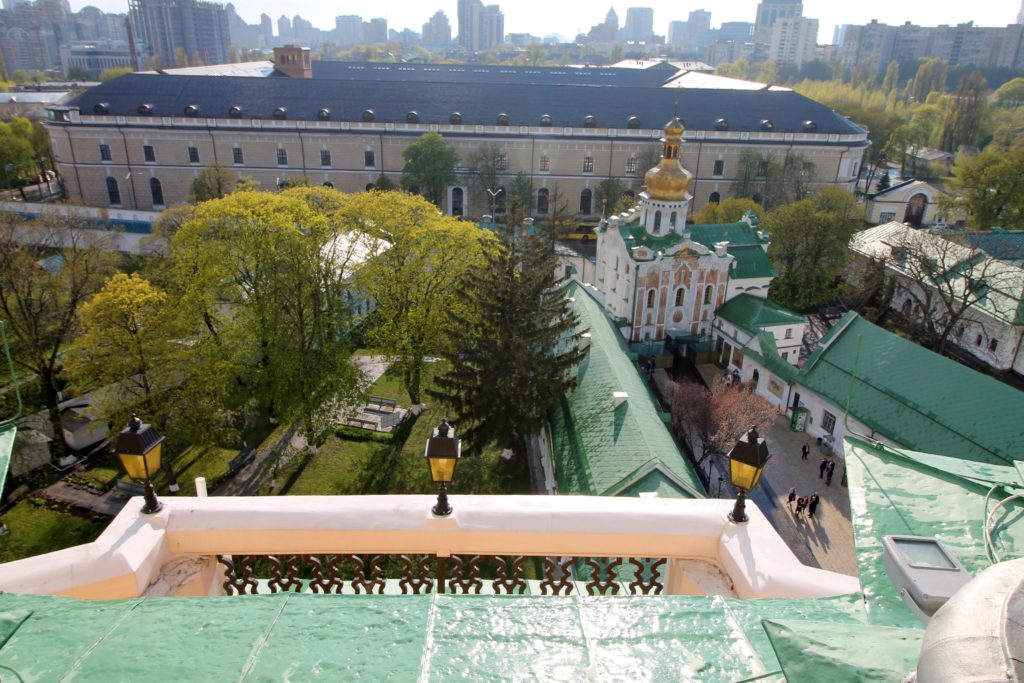
We visited a few churches and cathedrals, but we coudn’t take pictures inside due to religious services. The interior of the buildings is stunning. This is on of the artworks at the entrance of the Bell Tower.
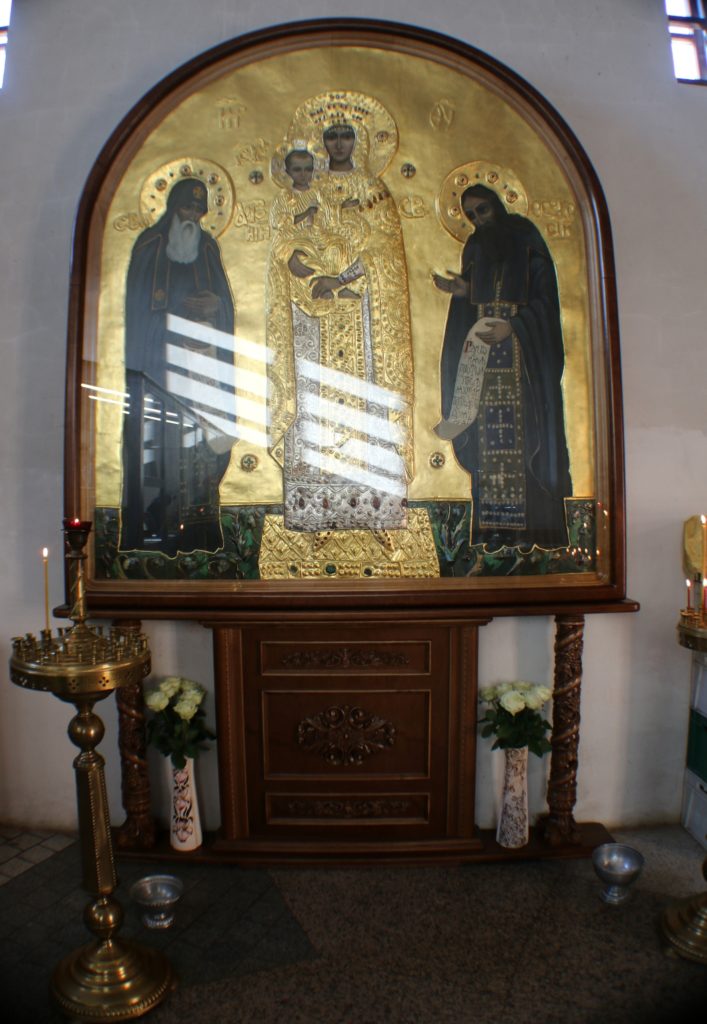
The Bell Tower also hosts a small museum. These are the curved eggs by one of the Ukrainian folk artists.
The reconstructed gorgeous Cathedral of the Dormition, the main church at the Upper Lavra.
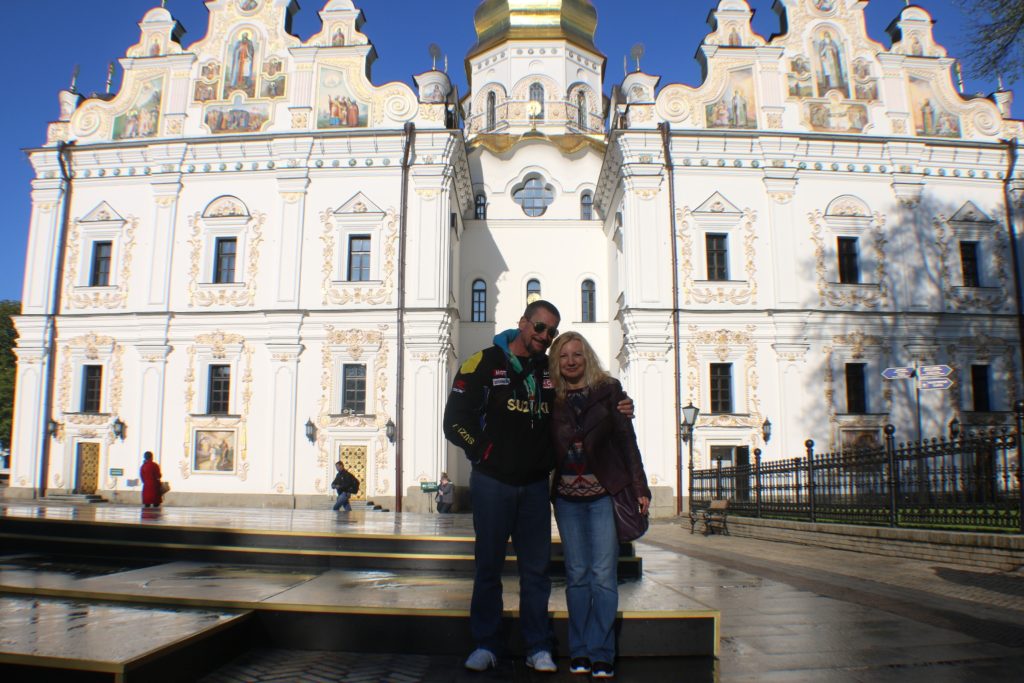
Fascinating history and absolutely exquisite buildings and artworks.
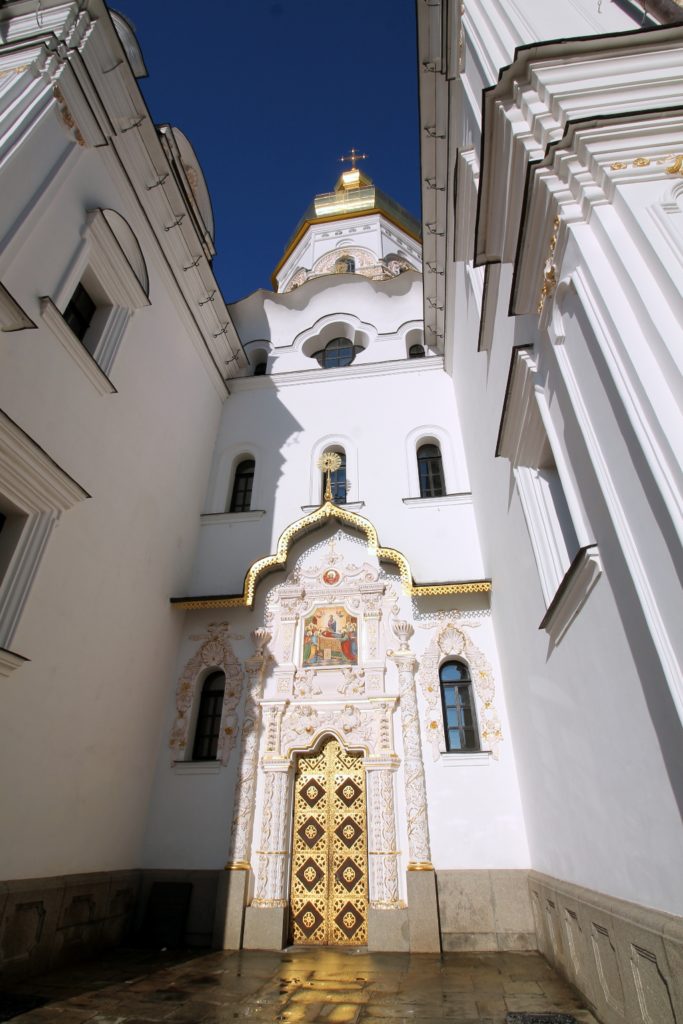
After visiting the Bell Tower, we walked the Pechersk Lavra grounds enjoying the beautiful architecture enhanced by the afternoon sunlight.
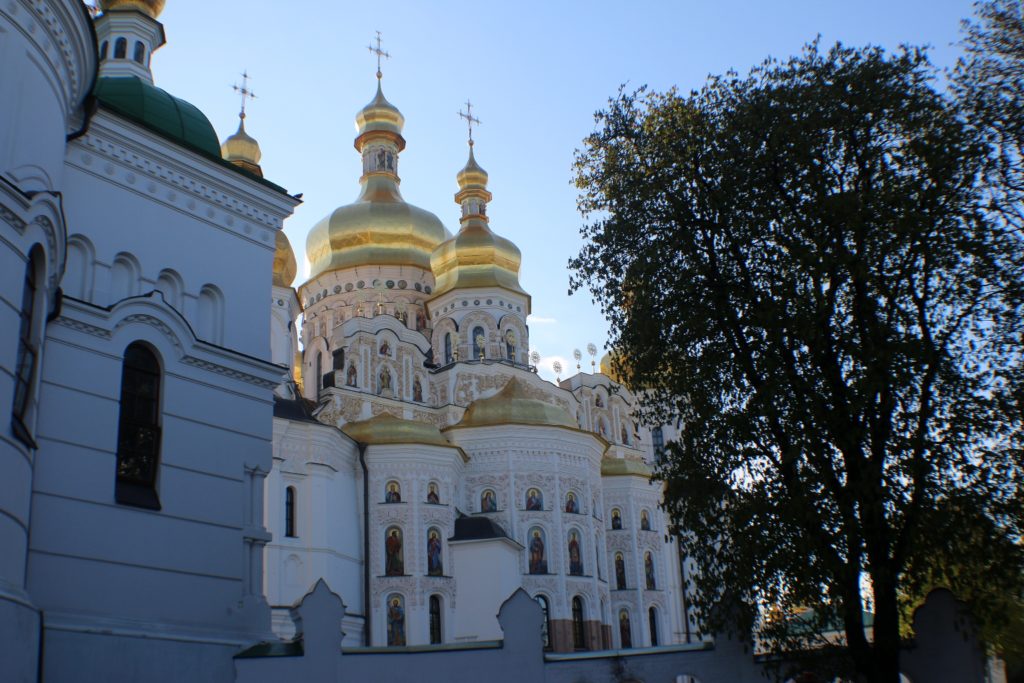
And we had the best dinner in one of the Lavra’s cafe. Food there was fairly healthy and absolutely delicious, great selection as well.
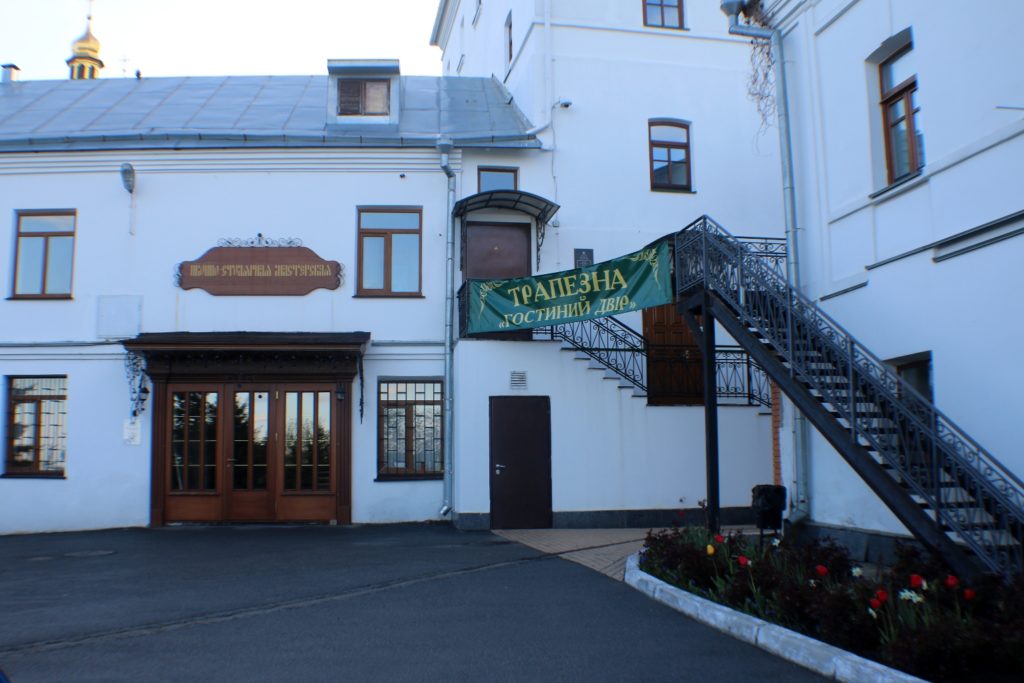
Leaving Pechersk Lavra. This street leads to one of the entrances to Pecherck Lavra. It was an exit for us.
A view of the entrance to the Cathedral complex and park of Kiev Pechersk Lavra in Kiev at sunset.
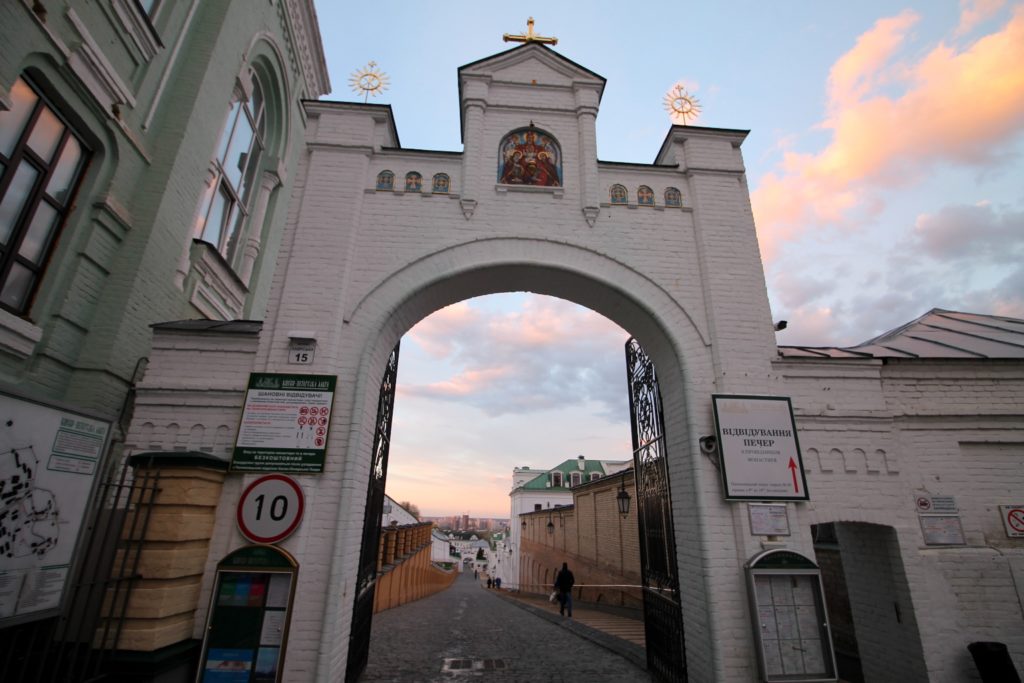
Next we visited the nearby park and the weekend flower exhibition.
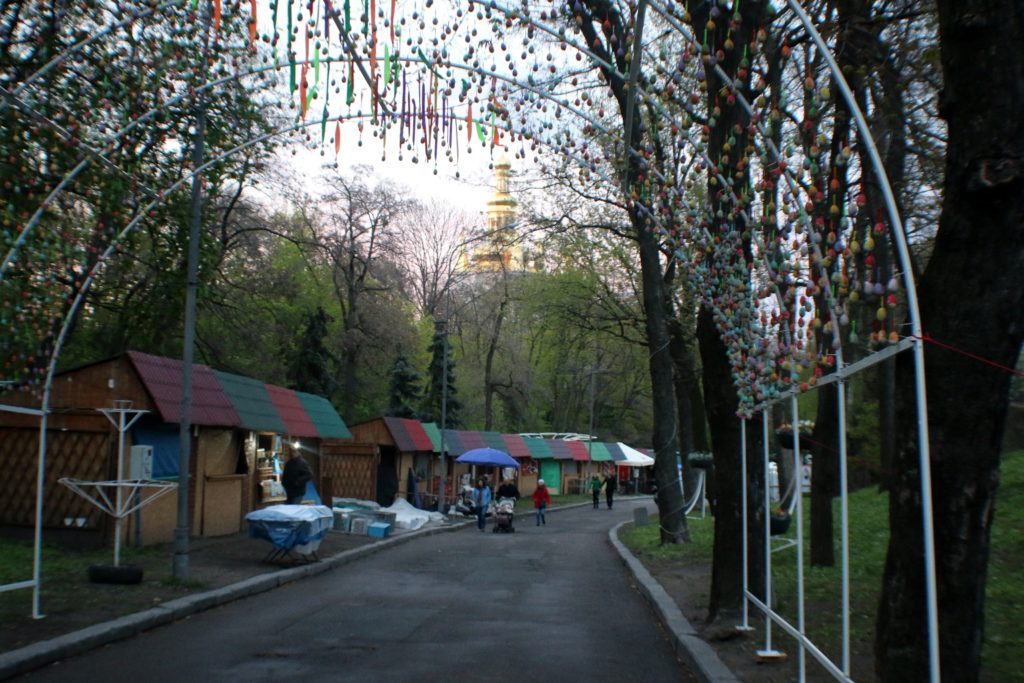
And took a picture at this photo op installation in the park.
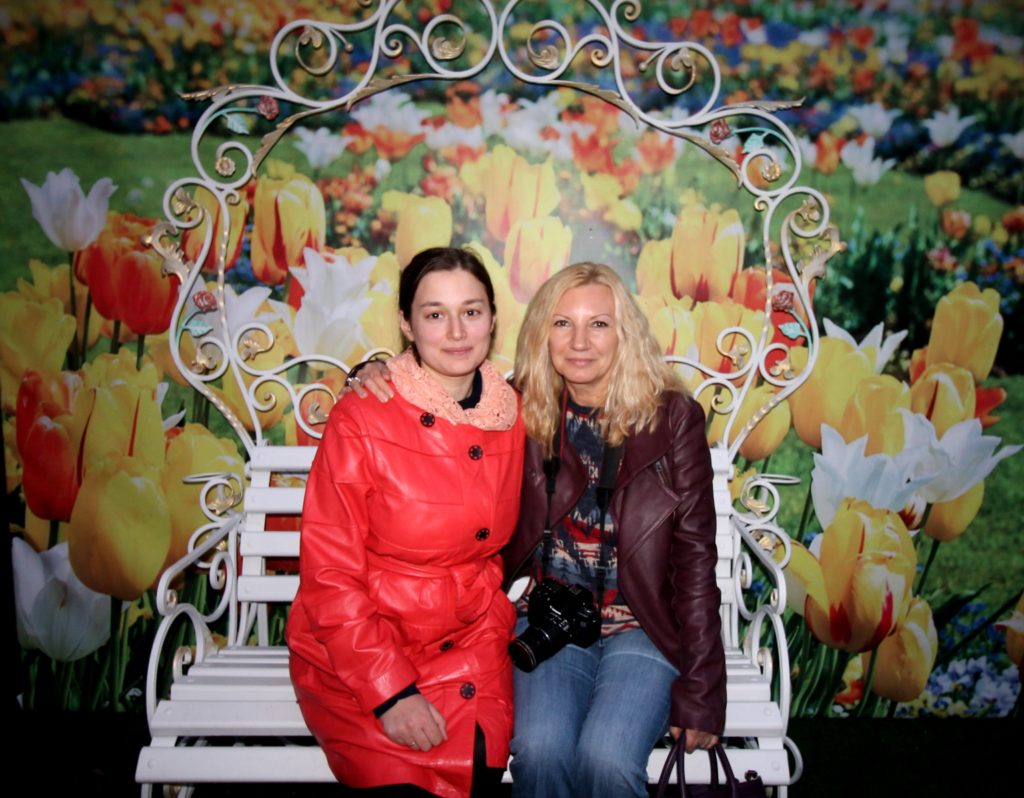
We enjoyed the beautiful flower exhibition there.
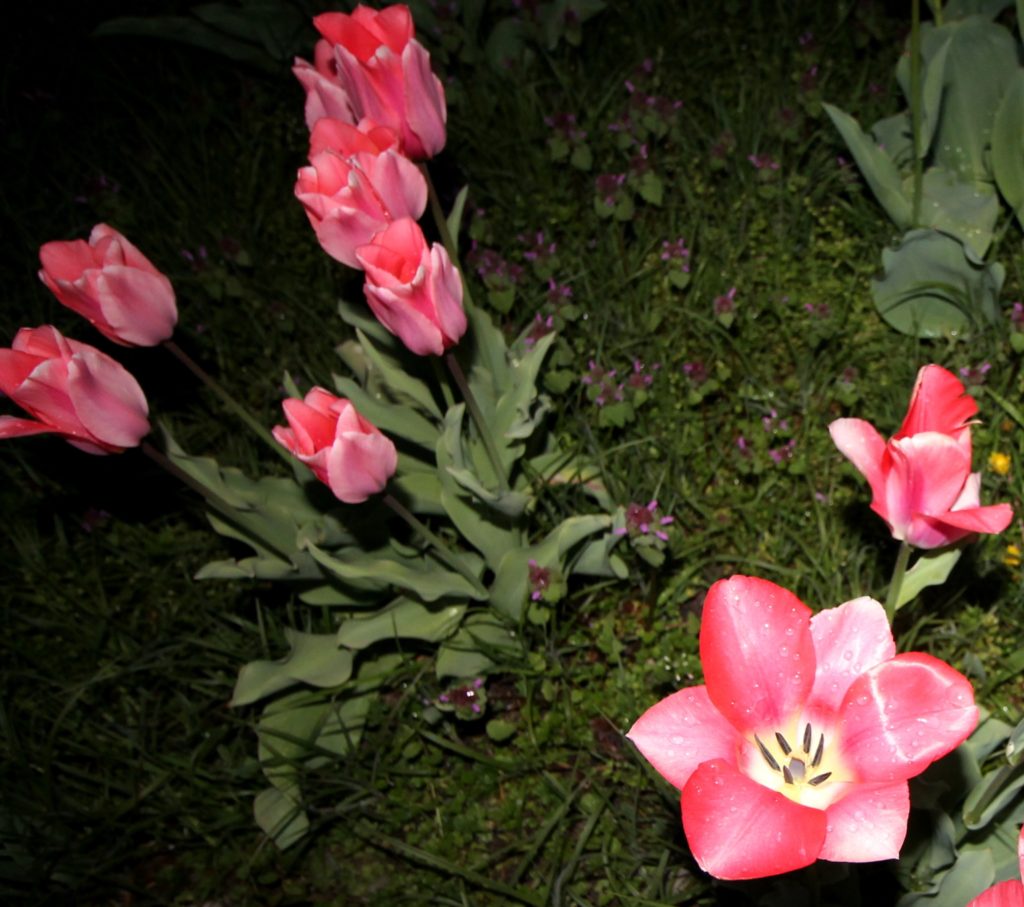
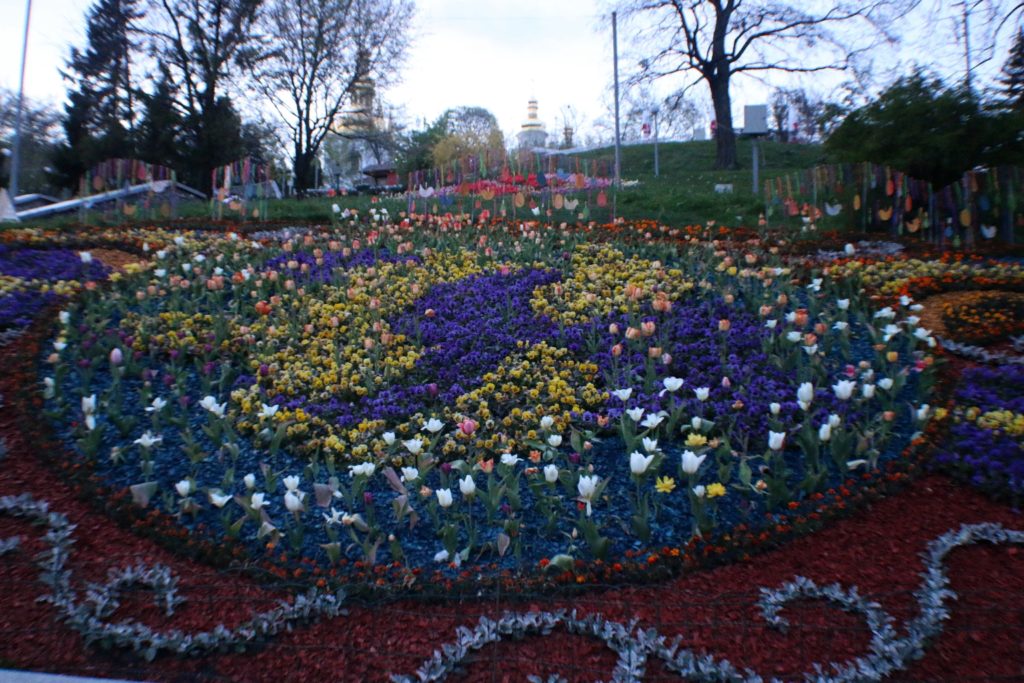
Here was an opportunity to look at the world through pink glasses.
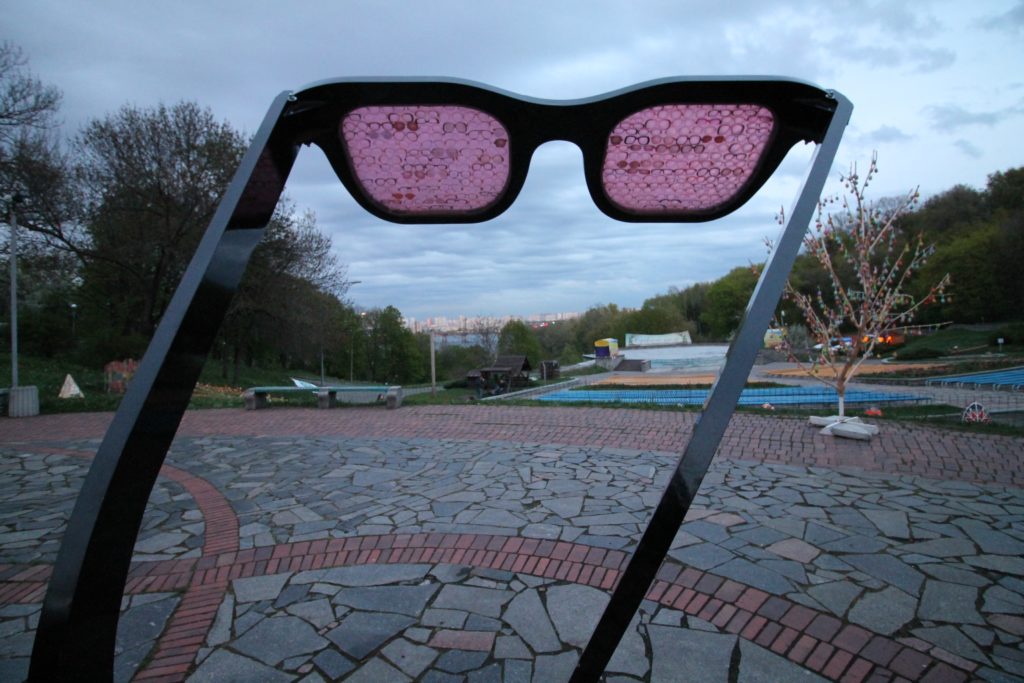
We planned to visit The Motherland Monument, but it was getting dark, so we skipped it. The Motherland Monument is a monumental statue in Kiev. The sculpture is a part of the Museum of The History of Ukraine in World War II, Kiev. A view of the sculpture from the park.
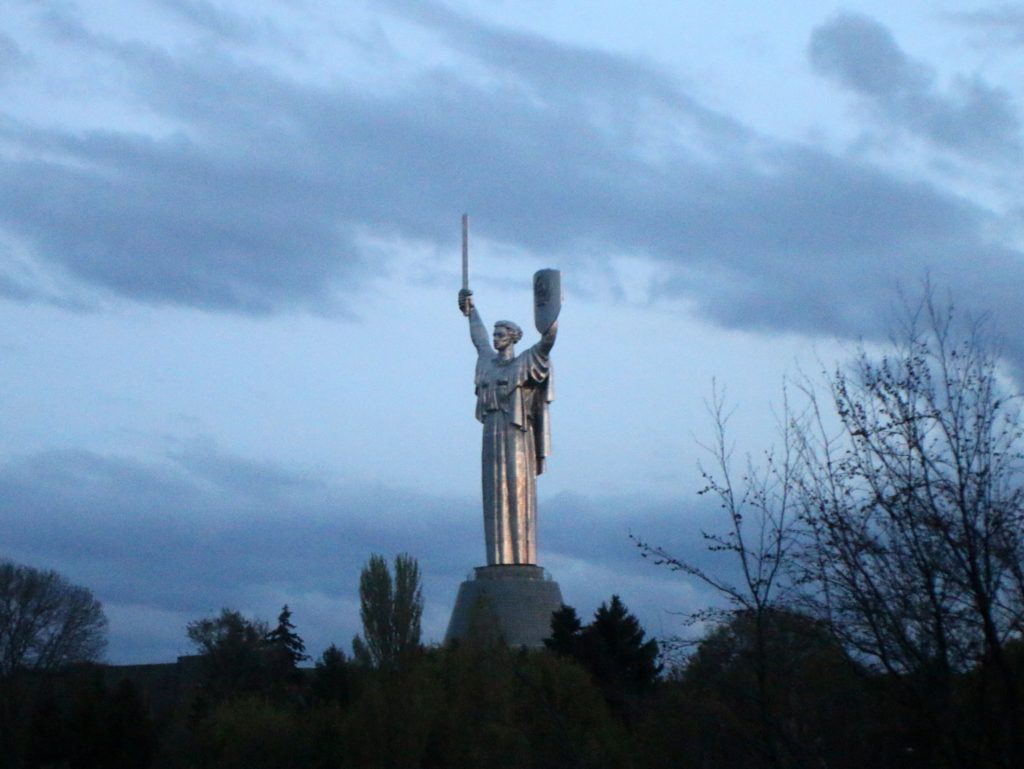
The rest of the evening we spent on the main Kiev Street – Khreschatyk. We really enjoyed walking on this street, especially when it was closed to traffic on week-ends.
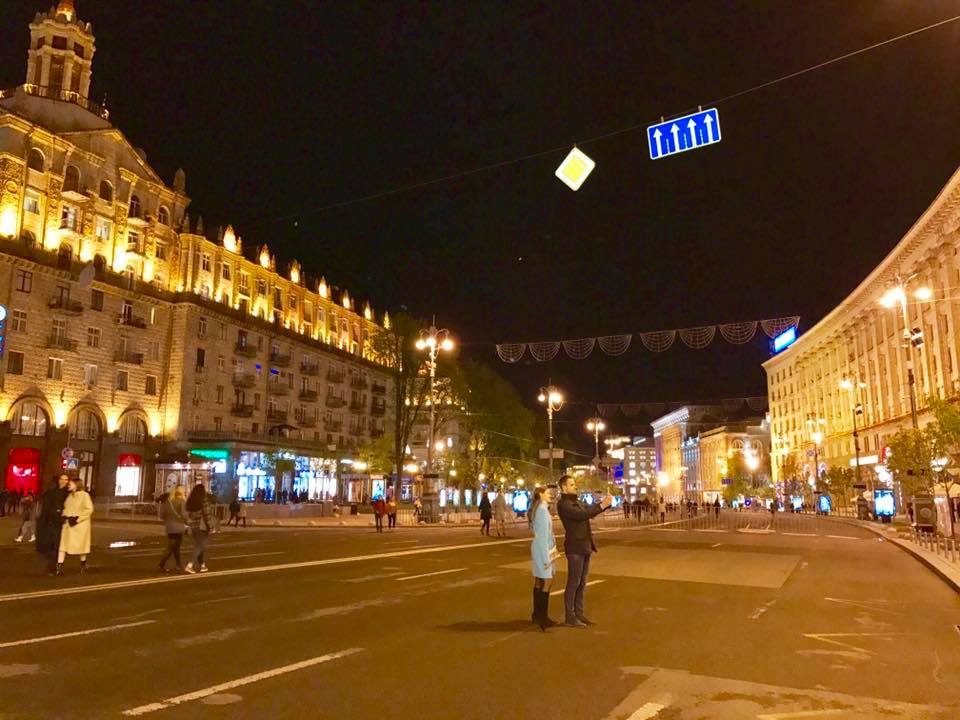
A view of Independence Monument at night from the hotel Ukraine grounds. Independence Monument is a victory column located on Maidan Nezalezhnosti (Independence Square) in Kiev and is commemorated to the Independence of Ukraine.
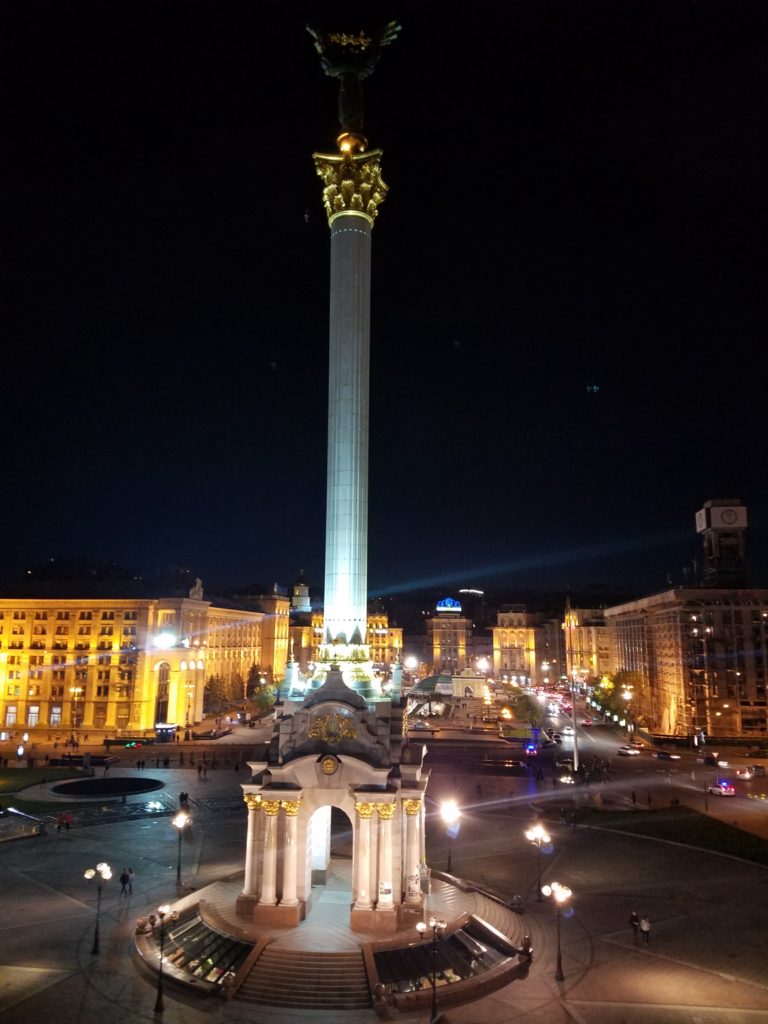
We stayed in the hotel Ukraine. It was a decent hotel, but the location was exceptional. It made our life there much easier. 🙂
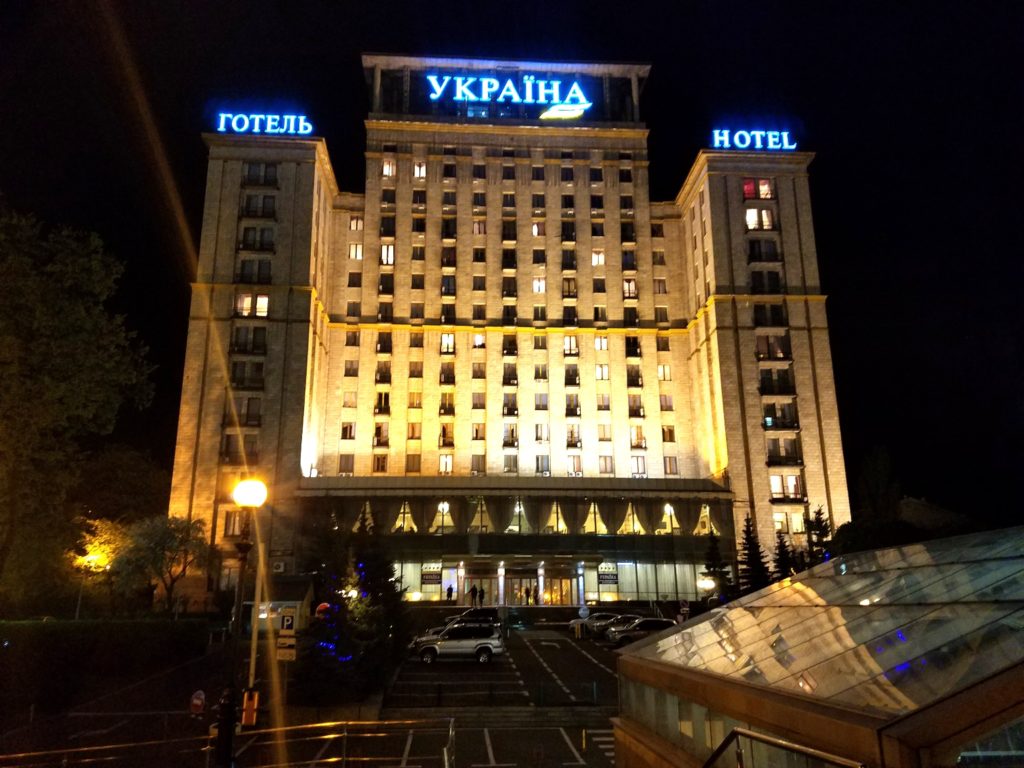
In the hotel room. Time to go to bed. We were both so tired, but we had a very nice time in Kiev.
